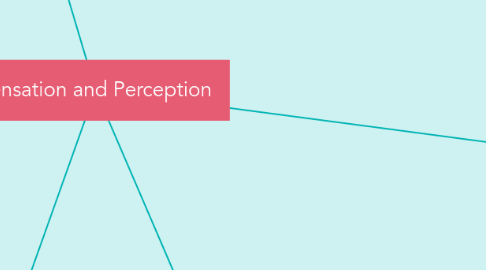
1. How do we see things?
1.1. Wavelength: wave of light that is converted into colors of the speectrum
1.1.1. Hue: color from a specific wavelength of light
1.2. The eye
1.2.1. Lens: What focuses light to the back of the eye, to the retina
1.2.2. Iris: Ring shaped membrane around the pupil
1.2.3. Pupil: The opening in your eye that allows light to enter
1.2.4. Retina: layer behind eye that trigger nerve impulses by being sensitive to light
1.2.5. Rods: give the ability to us to see in the dark
1.2.6. Cones: sharp images and color vision
1.2.7. optic nerve: transmits info from retina to brain
1.2.8. Blind spot: spot on the optic nerve that is unresponsive to light
1.2.9. fovea: small portion of retina where visuals are most clear
2. Sleeping
2.1. William Dement: Discovered sleep disorders
2.2. Eugene Aserinsky: accidentally discovered sleep stages
2.3. Nathaniel Leitman: Father of modern sleep research
3. Stanley cohen: discovered growth factors
4. Absolute threshold- least amount of stimuli needed to be processed
4.1. Subliminal: sensed below the level on consciousness
4.2. Difference threshold- smallest amount things can be different in order to notice the difference
4.2.1. Weber's Law: The change in a stimulus that is noticeable is a constant ratio of the original stimulus
5. How do we sense things?
5.1. Sensation- processes that allow the brain to take in information.
5.1.1. Nicholas Spanos: Also worked with hypnosis
5.1.2. Ernst Hilgard: discovered hypnosis
5.1.3. Perception- recognizing and interpreting sensory input
5.1.3.1. Priming: exposure to a stimulus affects later exposure
5.1.3.2. Intentional blindness: someone fails to see something in plain sight
5.1.3.2.1. Change blindness- people don't notice change in images
5.1.3.3. Bottom up processing:sensory data is pieced together based on only sensory inputs
5.1.3.4. Top down processing-sensory starts in our brain and then goes to our senses
5.1.3.5. Selective attention: responding to stimuli when several occur at once
5.1.3.6. Signal Detection Theory- how we distinguish patterns from non-patterns
5.1.3.7. Sensory Adaptation: change in response to a stimuli over time
5.1.3.7.1. Habituation: diminishing emotional effect of a stimuli
5.1.3.8. Transduction: How the brain takes outside stimuli and transforms them into neural impulses

